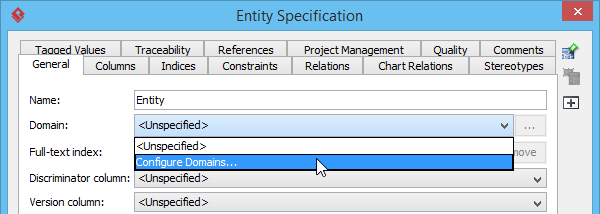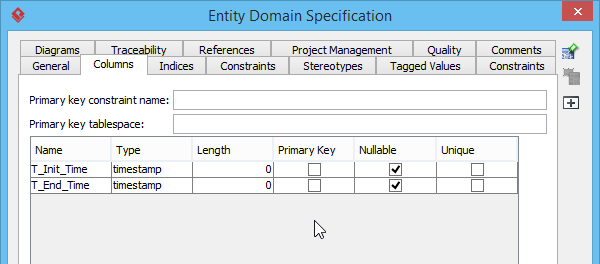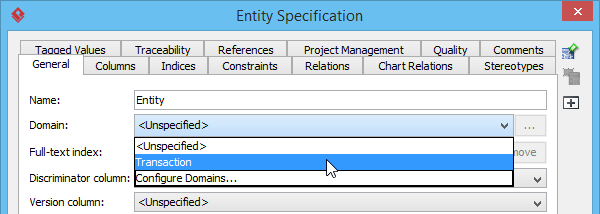If you create ERD for serious database development purpose, you may need to specify a lot of details for entities in addition to their names. For example, the schema the entities belong to, their tablespace, DDL clauses, description, indices, etc.
To specify these properties can be a time consuming task. Visual Paradigm supports the use of entity domain in re-using specification details between entities.
Each domain is a named set of property values that can be re-used by an entity. You can create a domain for commonly entered values such as schema, description template and default column assignment, and re-use these setting in other entities when needed. This saves you time in creating similar entities as well as to keep your data model consistent.
Defining an entity domain
You can define an entity domain from the Entity Specification window of any entity. To define an entity domain:
- Right click on any entity and select Open Specification… from the popup menu.
- Click on the drop down menu of the Domain row and select Configure Domains… from the drop-down menu.

- In the Configure Entity Domains window, click Add….
- Enter the name of the domain.

- Specify the properties. The properties you specified will be re-used by entities that use this domain.

- Click OK to confirm.
Using an entity domain
To use an entity domain:
- Open the specification of the entity to which you want use a domain. You can open entity specification by right clicking on that entity and selecting Open Specification… from the popup menu.
- Click on the drop down menu of the Domain row.
- Select the domain to use from the drop-down menu.

- Click OK to confirm. By doing so the entity will be updated to apply the property values specified in the domain.